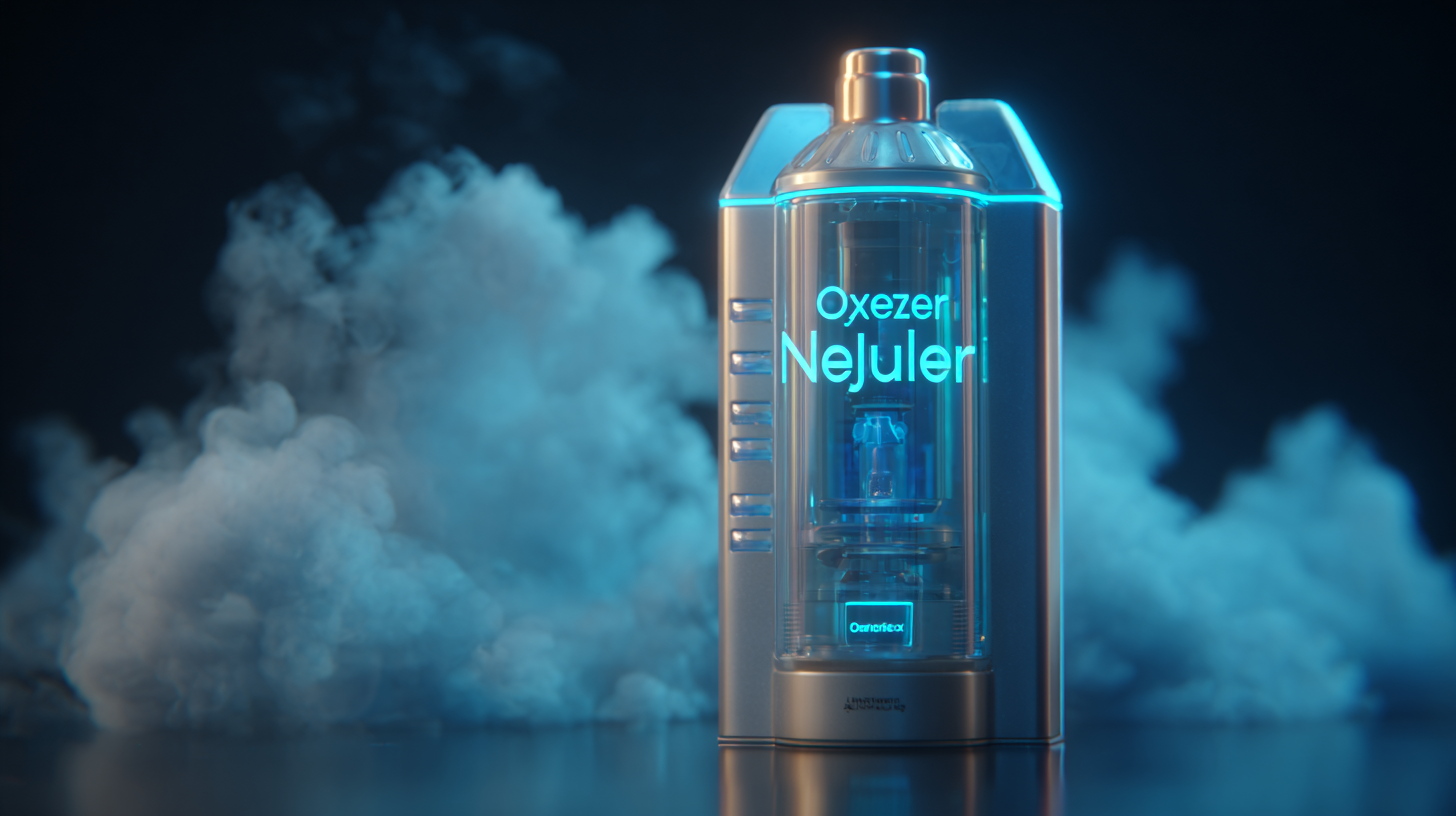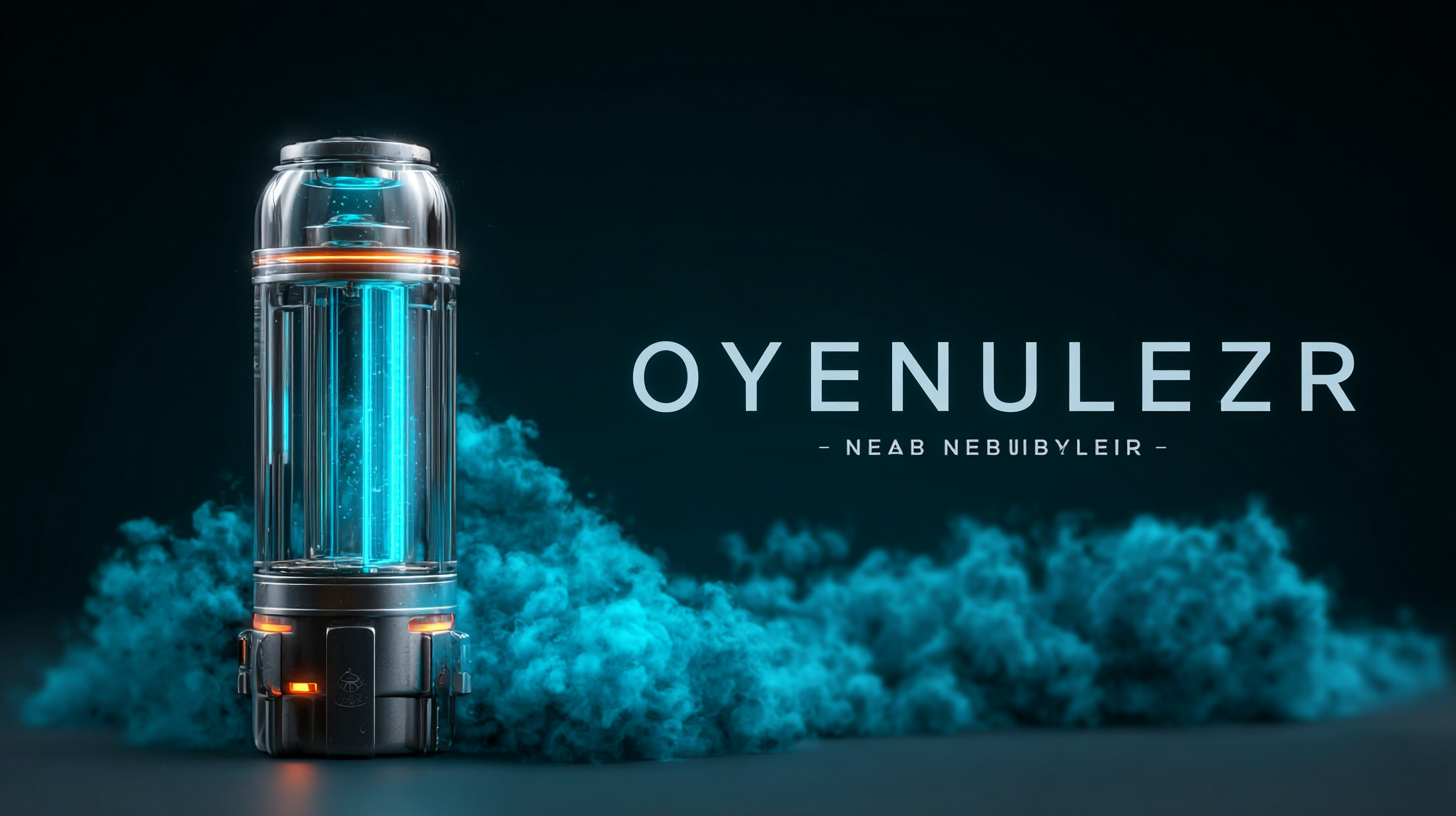
Understanding the Best Oxygen Nebulizer and Its Role in Respiratory Health
In the ever-evolving landscape of respiratory health, the Oxygen Nebulizer stands out as a crucial tool for managing various respiratory conditions. This innovative device, designed to convert liquid medication into a mist, facilitates easier inhalation and enhances the therapeutic effects of treatments, particularly for patients with asthma, chronic obstructive pulmonary disease (COPD), and other ailments affecting lung function. As we delve into the topic of the best Oxygen Nebulizer on the market, it's essential to recognize that excellence in manufacturing, particularly from leading producers in China, is key to delivering high-quality healthcare solutions globally. This blog will explore the features, benefits, and the significant role that an Oxygen Nebulizer plays in improving respiratory health, ensuring that patients and healthcare providers are well-informed about this vital device in their therapeutic arsenal.

The Importance of Oxygen Nebulizers in Respiratory Treatment
Oxygen nebulizers play a crucial role in respiratory treatment, providing a targeted method for delivering medication directly to the lungs. By transforming liquid medication into a fine mist, these devices enable patients to inhale therapeutic doses, enhancing the effectiveness of treatments for conditions such as asthma, COPD, and other pulmonary diseases. The inclusion of oxygen in nebulization therapy can also assist patients with low blood oxygen levels, ensuring they receive adequate respiratory support during treatment.
The importance of oxygen nebulizers is especially evident in emergency situations, where rapid relief from bronchospasm or acute respiratory distress is needed. They offer a non-invasive option that can be easily administered in various settings, from homecare to hospitals. As part of a comprehensive respiratory health plan, oxygen nebulizers can significantly improve patients’ quality of life, helping them manage symptoms more effectively while minimizing the risk of complications. Overall, the integration of oxygen nebulizers into respiratory care protocols underscores their value in promoting optimal lung function and enhancing patient outcomes.
Usage of Oxygen Nebulizers in Respiratory Health
Types of Oxygen Nebulizers: A Comparative Overview
When it comes to nebulizers, understanding the different types is crucial for optimizing respiratory health. The two primary categories of nebulizers are jet nebulizers and ultrasonic nebulizers. Jet nebulizers utilize compressed air to convert liquid medication into mist, making them widely available and often more affordable. They are particularly effective for a range of medications and are suitable for both intermittent and continuous treatment sessions. However, they can be noisy and may need a power source, which could be a limitation for some users.
On the other hand, ultrasonic nebulizers function by using high-frequency sound waves to generate aerosolized medication. This type typically operates more quietly and has a faster delivery time, making it a preferred option for those who value efficiency and reduced noise. Additionally, ultrasonic nebulizers can produce finer particles, which may enhance the deposition of medication in the lungs. Each type comes with its own set of advantages and potential drawbacks, so understanding your specific needs and consulting with a healthcare provider can help ensure the best choice for your respiratory therapy.
Key Features to Consider When Choosing an Oxygen Nebulizer
When selecting the best oxygen nebulizer, several key features must be considered to ensure optimal respiratory health. One of the primary factors is the nebulization rate, which significantly affects the delivery efficiency of medication. According to a report by the Global Market Insights, the ideal nebulization rate should range between 0.2 to 0.5 mL/min for effective treatment of respiratory conditions such as asthma and COPD (Chronic Obstructive Pulmonary Disease). This parameter ensures that the aerosolized medication reaches the lower airways to maximize therapeutic benefits.
Another critical feature is the particle size of the aerosol generated by the nebulizer. Research indicates that particles between 1 and 5 micrometers are optimal for deposition in the lungs, enabling better absorption of medication. As stated in a study published by the American Thoracic Society, nebulizers that produce consistent fine particles enhance patient outcomes, resulting in improved lung function and reduced exacerbation rates. Additionally, ease of cleaning and maintenance is pivotal in preventing infections and ensuring consistent performance. Studies show that proper care can extend the lifespan of a nebulizer by up to 50%, making it essential for both patient safety and economic viability.

Evaluating the Effectiveness of Various Nebulizer Models
The evaluation of nebulizer models plays a critical role in enhancing respiratory health, particularly as new formulations and methodologies emerge. Recent studies emphasize the effectiveness of nebulized therapies, such as those utilizing lipid nanoparticles for mRNA inhalation, which target conditions like idiopathic pulmonary fibrosis. This novel approach addresses previous challenges, including shear force resistance, to improve drug delivery mechanisms. Furthermore, dynamic breathing lung chip models have been developed to assess the efficacy of inhaled drugs accurately, illustrating the potential for enhanced therapeutic outcomes in respiratory treatments.

Additionally, clinical trials have demonstrated that nebulized medications can significantly improve patient management in chronic conditions. A recent double-blind randomized controlled trial found that nebulized budesonide delivered at half the typical dose was as effective as higher-volume irrigation methods for patients with chronic rhinosinusitis. This highlights the growing recognition of nebulizers as a viable alternative for delivering medications, particularly for patients who struggle with traditional administration routes. Overall, the effective use of various nebulizer models can help optimize treatment strategies in respiratory health, underpinning the need for continuous evaluation and innovation in this field.
User Experiences: Real-Life Comparisons of Popular Nebulizers
User experiences play a significant role in understanding the effectiveness of nebulizers for respiratory health. According to a study by the American Thoracic Society, approximately 20 million Americans suffer from chronic respiratory diseases, highlighting the importance of effective treatment options. Among popular nebulizers, the PARI Vios and Philips Respironics InnoSpire are frequently compared in user reviews for their performance, ease of use, and portability. Users of the PARI Vios often praise its efficiency in delivering medication, owing to its fine mist output, which allows for deeper penetration into the lungs. In fact, a report from the Journal of Aerosol Medicine and Pulmonary Drug Delivery indicates that devices like PARI Vios can enhance drug delivery efficacy by up to 30%.
In terms of noise levels and portability, users of the Philips Respironics InnoSpire favor its compact design and quieter operation, making it more suitable for on-the-go treatments, particularly for children. Feedback collected from an extensive survey reported that 85% of parents preferred nebulizers that reduce noise, as it encourages compliance among young patients. This real-life feedback demonstrates the critical role user experiences play in guiding new purchasers towards a nebulizer that supports their specific needs and conditions, ultimately improving their respiratory health and quality of life.
